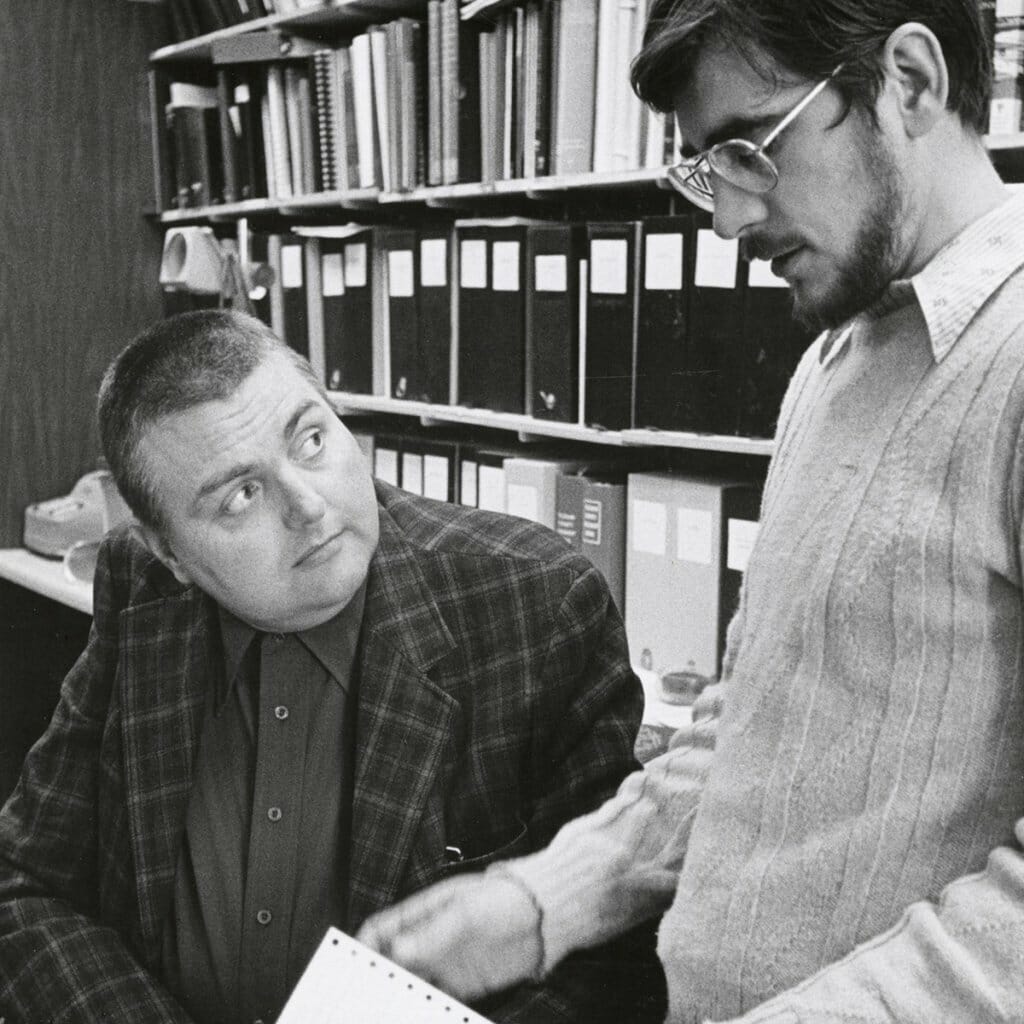Real Estate for People, Not Profit
Inspired by the Wisconsin Idea, James Graaskamp PhD’65 preached an ethical approach to development.

Graaskamp (left) built models that showed why successful development always respected people, society, and the environment. Norman Lenburg, UW Archives S08450
To students, James Graaskamp PhD’65 was “The Chief.” A brilliant scholar, he espoused an ethical approach to real estate development that put the UW atop national rankings.
“The successful real estate deal is nothing more than a series of crises tied together by a critical path,” he said.
Graaskamp built a legacy as a determined, creative problem-solver, a master teacher, and a devoted mentor. As a professor and department chair, he led the UW’s real estate faculty from 1964 to 1988.
Graaskamp’s approach to real estate development built on the legacy of the Wisconsin Idea. He prioritized ethics over profits, building models that showed why successful development always respected people, society, and the environment.
Practitioners remain inspired by Graaskamp’s portfolio-management theory as well as his seminal works, Fundamentals of Real Estate Development and A Guide to Feasibility Analysis. But those who knew him were equally inspired by his scholarship and spirit.
“He pursued life with unbridled enthusiasm, energy, curiosity, and courage,” one colleague said. “His positive outlook and lack of self-pity were living testimony to the potential of the human spirit.”
He earned a bachelor’s degree in creative writing at Rollins College, an MBA at Marquette University, and a PhD at the UW in urban land economics and risk management before accepting a full-time faculty position. He also ran his own private consultancy, Landmark Research, and advised policymakers who oversaw Wisconsin’s rapid development during the 1970s and ’80s.
Graaskamp lost the use of his arms and legs after contracting polio in high school, and he used a wheelchair during his adult life. He hired trusted students as “materials handlers” to assist him in his day-to-day activities, which included work, travel, and occasional deep-sea fishing. As a teacher, Graaskamp could be demanding, but he captured students’ attention with his mentorship, intellect, and quotable lectures, using his teeth to hold an 18-inch stick — his “magic wand” — to turn paper notes.
His contributions are fittingly honored on campus through the James A. Graaskamp Center for Real Estate and in the McBurney Disability Resource Center, which ensures access to students with disabilities.
Just as he believed that real estate could bring about good for society, he was also outspoken about support for the university’s people: “When you’re asked to give, give for endowments, not buildings. Just as the church is the congregation, not the structure, a university is a fellowship of motivated scholars, not an indoor athletic facility and column-free temple for graduation speeches.”
Graaskamp died in 1988 while he was still department chair. The university had great difficulty appointing a worthy successor.
Published in the Winter 2021 issue


Comments
No comments posted yet.